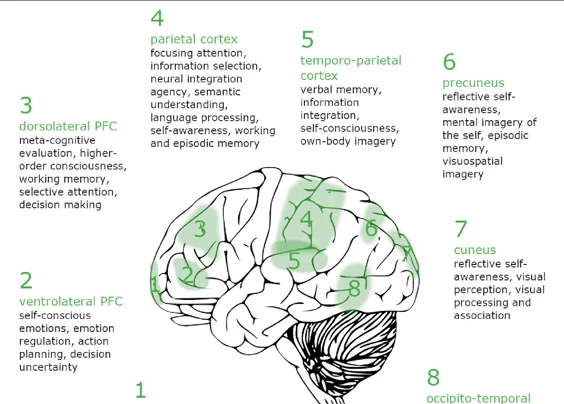Introduction

The mysteries of the dream world have captivated humans for centuries, offering a gateway to exploring the depths of our consciousness while we sleep. In this article, we delve into the fascinating realm of lucid dreaming and sleep paralysis, uncovering the intricate connection between these two phenomena. We will explore what lucid dreaming entails and how it differs from regular dreaming, as well as understanding the phenomenon of sleep paralysis and its unique characteristics. We will examine the shared neurological processes that link lucid dreaming and sleep paralysis, offering insights into how one can be a gateway to the other. Along the way, we will discuss scientific studies and research findings that shed light on this complex relationship, as well as touch upon the spiritual and metaphysical aspects of these experiences. Additionally, we will provide practical tips for managing and harnessing both lucid dreaming and sleep paralysis, while also considering the potential benefits and dangers associated with these extraordinary states of consciousness. Join us as we unravel the enigmatic link between dreaming and awakening.
The Mysteries of the Dream World
The Mysteries of the Dream World have fascinated humanity since ancient times, providing a rich tapestry of exploration and fascination. Dreams have long been seen as windows into the subconscious mind, where thoughts, emotions, and experiences intertwine in intricate and sometimes bewildering ways. They offer glimpses into a realm where logic and reason often take a backseat, allowing fantastical narratives and surreal landscapes to unfold. Within the dream world, individuals can find themselves immersed in vivid and lifelike scenarios that defy the laws of nature and stretch the limits of imagination. Dreams can be a source of inspiration and creativity, providing artists, writers, and musicians with a wellspring of ideas. They can also offer an outlet for processing emotions, allowing individuals to confront their fears, desires, and unresolved conflicts. Yet, dreams remain elusive and enigmatic, with much still to be uncovered about their true nature and purpose. Scientists and psychologists continue to explore the mysteries of the dream world, investigating the mechanisms behind dreaming, the role of REM sleep, and how dreams may influence our waking lives. As we journey deeper into the intricate realm of dreaming, we will unravel the fascinating connection between lucid dreaming and sleep paralysis, shedding light on the extraordinary experiences that lie within this mysterious domain.
What is Lucid Dreaming?

What is Lucid Dreaming? Lucid dreaming is a remarkable phenomenon that offers individuals the ability to become aware and conscious within their dreams. Unlike regular dreaming, where the dreamer is often passive and unaware of the dream state, lucid dreaming brings about a heightened sense of self-awareness and control. In a lucid dream, individuals can actively participate in shaping the dream narrative and manipulating their dream environment. This state of consciousness allows dreamers to engage in extraordinary experiences, such as flying, exploring fantastical landscapes, or interacting with imagined characters. The concept of lucid dreaming has been documented throughout history, with accounts dating back to ancient civilizations. Over the years, individuals like Mary Shelley and Nikola Tesla have reported engaging in lucid dreams, harnessing the power of their dreaming minds. Lucid dreaming can serve as an avenue for personal growth, problem-solving, and self-reflection. By consciously navigating the dream world, individuals can utilize their dreams to explore their innermost thoughts, confront fears, and gain insights into their waking lives. For those suffering from nightmares, lucid dreaming can offer a means of overcoming these night terrors, providing a sense of empowerment and control. It is truly a fascinating frontier of human consciousness and exploration.
Exploring Consciousness in Dreamscapes
Entering the realm of dreams opens up a unique opportunity for exploring consciousness in dreamscapes. When we dream, the boundaries of reality dissolve, and our minds venture into uncharted territories. Lucid dreaming, a state in which the dreamer becomes aware that they are dreaming while still immersed in the dream world, takes this exploration to the next level. During a lucid dream, individuals have the remarkable ability to exert some control over their dream environment and storyline. This heightened level of self-awareness allows for a deeper engagement with the dream experience. Lucid dreamers can consciously shape the dream narrative, manifest desired outcomes, and even interact with dream characters. It is as if they step into a richly detailed and interactive virtual reality where the only limitations are those of the imagination. This unique state of consciousness offers individuals the opportunity for self-reflection, personal growth, and even problem-solving. By entering a lucid dream, a person can confront their fears and insecurities, overcome obstacles, and gain insight into their own psyche. Lucid dreaming has often been associated with therapeutic potential, with some individuals using it as a tool for overcoming nightmares or addressing emotional challenges. Exploring consciousness in dreamscapes reveals the immense power of the human mind and its capacity to create and explore alternate realities. As we delve deeper into the topic of lucid dreaming and sleep paralysis, we will uncover the ways in which these experiences intertwine and influence one another, shedding light on the fascinating and multifaceted nature of human consciousness.
What is Sleep Paralysis?
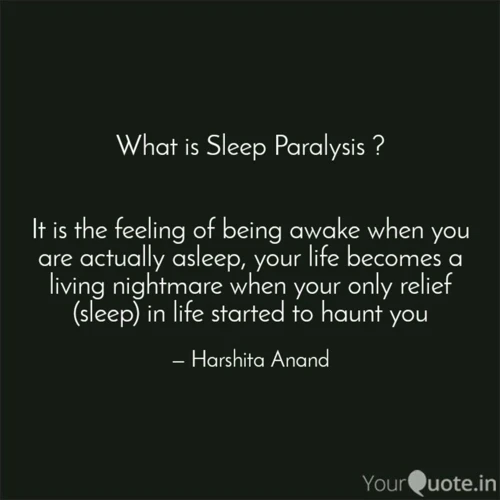
Sleep paralysis is a phenomenon that occurs during the transition between sleep and wakefulness, leaving individuals temporarily unable to move or speak. It is often accompanied by a sense of pressure on the chest and a feeling of intense fear. During sleep paralysis, the mind wakes up, but the body remains in a state of temporary paralysis, which can be a frightening and disorienting experience. This phenomenon occurs due to the disruption of the normal sleep cycle, most commonly during REM (rapid eye movement) sleep, the stage where most dreaming occurs. While sleep paralysis is a relatively harmless occurrence, it can be quite distressing for those who experience it. Many individuals report hallucinations and a sense of being watched or accompanied by supernatural entities during this state. Understanding sleep paralysis is crucial as it plays a significant role in the connection between lucid dreaming and sleep paralysis. Sleep paralysis can sometimes be used as a tool to induce lucid dreaming, where individuals become aware that they are dreaming and gain control over the dream environment. By navigating the state of sleep paralysis, individuals can harness its potential to explore the depths of their subconscious and overcome nightmares.
When the Mind Awakens, But the Body Remains Asleep
When the mind awakens, but the body remains asleep, a phenomenon known as sleep paralysis occurs. Sleep paralysis is a peculiar state where individuals find themselves temporarily unable to move or speak, typically lasting for a few seconds to a couple of minutes. This occurrence often happens during the transition between wakefulness and sleep, as well as upon awakening from sleep. During sleep paralysis, individuals may experience a range of sensory hallucinations, including seeing or sensing a presence in the room, feeling pressure on the chest, or hearing strange sounds. These hallucinations can be vivid and unsettling, causing a sense of fear or panic. While the body remains in a state of paralysis, the mind can be fully aware, creating a perplexing and often frightening disconnection between the two. Sleep paralysis is thought to occur due to a disruption in the normal sleep cycle, particularly during rapid eye movement (REM) sleep. During REM sleep, the brain is highly active, and dreams often occur. The body, however, enters a state of muscle atonia, or temporary paralysis, to prevent acting out dreams and potentially causing harm. Sleep paralysis can occur when this muscle atonia persists even as the mind begins to wake up. Understanding sleep paralysis is crucial in grasping the intricate relationship it shares with lucid dreaming, which we will explore in further detail.
The Connection Between Lucid Dreaming and Sleep Paralysis

The Connection Between Lucid Dreaming and Sleep Paralysis is a fascinating topic that reveals the intricate relationship between these two phenomena. Lucid dreaming occurs when an individual becomes aware that they are dreaming, allowing them to exert control over their dream narratives and experiences. Sleep paralysis, on the other hand, is a state where the mind wakes up, but the body remains temporarily paralyzed, often accompanied by a sense of pressure or a feeling of being unable to move. While these experiences may seem distinct, they actually share common neurological processes. Both lucid dreaming and sleep paralysis occur during the REM (rapid eye movement) stage of sleep when the brain is highly active. This connection suggests that lucid dreaming can serve as a gateway to sleep paralysis, as individuals transitioning between dream states may experience moments of consciousness coupled with physical immobility. Understanding the connection between these two states opens up new possibilities for exploring the depths of human consciousness and utilizing techniques like lucid dreaming to overcome nightmares through the power of self-reflection and problem-solving.
Shared Neurological Processes
Shared Neurological Processes play a crucial role in understanding the connection between lucid dreaming and sleep paralysis. Both phenomena are believed to stem from disruptions in the sleep cycle and involve alterations in brain activity. Scientific studies have identified the involvement of certain brain regions and neurotransmitters in both experiences. The prefrontal cortex, which is responsible for decision-making and self-awareness, seems to play a significant role in lucid dreaming. During this state, the prefrontal cortex becomes more active, allowing individuals to recognize that they are in a dream and exert some control over the dream narrative. Sleep paralysis, on the other hand, involves a delicate balance between the brain’s state of wakefulness and sleep. During sleep paralysis episodes, the brain often remains in a state of partial wakefulness, causing temporary paralysis of the body. This can lead to vivid hallucinations and a sense of being awake while unable to move. The overlap in neurological processes suggests a potential link between these two experiences, as they both involve alterations in self-awareness and the perception of one’s body and surroundings. Understanding these shared neurological processes brings us one step closer to unraveling the mysteries of lucid dreaming and sleep paralysis and the intricate relationship between them.
Lucid Dreaming as a Gateway to Sleep Paralysis
Lucid dreaming, with its ability to provide conscious awareness and control within the dream state, can serve as a gateway to sleep paralysis, an intriguing and sometimes unsettling phenomenon. During a lucid dream, individuals become aware that they are dreaming and can actively manipulate the dream narrative and environment. This heightened state of consciousness can sometimes lead to an overlap with sleep paralysis, where the mind awakens while the body remains temporarily paralyzed. Sleep paralysis usually occurs during the transition between sleep and wakefulness, when the body naturally immobilizes itself to prevent acting out dreams. However, in the case of sleep paralysis, individuals may find themselves unable to move or speak despite being fully conscious and aware of their surroundings. This can be accompanied by vivid hallucinations and a sense of pressure or weight on the chest. While sleep paralysis is commonly associated with feelings of fear and vulnerability, lucid dreamers can view it as an opportunity to explore this unique state of consciousness. By recognizing the signs of sleep paralysis within a lucid dream and maintaining a calm and curious mindset, individuals can delve deeper into understanding this phenomenon and potentially use it as a platform for self-exploration and personal growth. This connection between lucid dreaming and sleep paralysis opens a door to uncharted territories of the mind, offering a fascinating and often transformative journey for those willing to venture into this compelling domain.
The Role of Sleep Paralysis in Lucid Dreaming
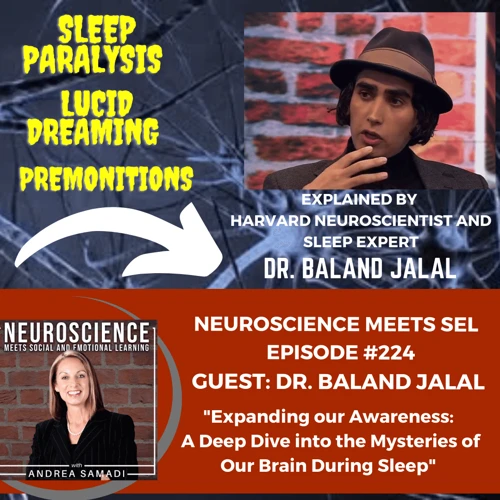
Sleep paralysis plays a fascinating role in the realm of lucid dreaming. As the mind awakens from sleep while the body remains immobilized, sleep paralysis can serve as a gateway to inducing lucid dreams. Many individuals have reported experiencing sleep paralysis just before entering a lucid dream state, where they become aware of their dream environment and gain control over their actions. Sleep paralysis acts as a bridge between the waking world and the dream world, allowing individuals to seamlessly transition into a state of lucidity and exploration. Although sleep paralysis can initially be accompanied by feelings of fear and helplessness, understanding its connection to lucid dreaming can empower individuals to overcome these negative emotions and harness the power of their dreams. By utilizing techniques such as reality checks, meditation, and visualization, individuals can transform sleep paralysis into a tool for lucid dreaming and gain access to the boundless possibilities and insights that await within the dream realm. (Source: role of lucid dreaming in overcoming nightmares)
Using Sleep Paralysis to Induce Lucid Dreaming
Using Sleep Paralysis to Induce Lucid Dreaming is a technique that has gained popularity among those seeking to explore the depths of their subconscious mind. Sleep paralysis, a phenomenon where the mind awakens while the body remains in a state of paralysis, can serve as a natural gateway to lucid dreaming. During sleep paralysis, individuals may find themselves in a state of heightened awareness, where they are fully conscious but unable to move their bodies. This unique state allows for the potential to transition from sleep paralysis into a lucid dream. One common method used to induce lucid dreaming from sleep paralysis is the “Wake Induced Lucid Dream” (WILD) technique. This involves remaining still and calm during sleep paralysis while focusing on a specific dream scene or scenario. By visualizing and immersing oneself in a desired dream environment, individuals can increase their chances of transitioning from sleep paralysis into a lucid dream. It is important to note that this method requires practice and patience, as it may take time to achieve the desired results. However, for those who are able to successfully navigate this process, the rewards can be profound. Lucid dreaming offers a unique opportunity to engage with and manipulate the dream world, allowing for self-reflection, problem-solving, and even creative inspiration. By harnessing the power of sleep paralysis as a stepping stone to lucid dreaming, individuals can tap into the limitless potential of their subconscious mind.
Overcoming Fear and Harnessing the Power
Overcoming Fear and Harnessing the Power within the realm of lucid dreaming and sleep paralysis is a transformative journey that can unlock profound personal growth and self-discovery. One of the most common challenges encountered in these experiences is fear. Sleep paralysis, in particular, can induce feelings of terror as individuals find themselves in a state of paralysis while navigating a dreamscape. However, understanding the nature of sleep paralysis and its connection to lucid dreaming can empower individuals to face their fears head-on. By recognizing that sleep paralysis is a natural process that occurs during REM sleep, individuals can reframe their perception and approach it as an opportunity for lucid dreaming. This shift in perspective allows one to perceive sleep paralysis as a gateway to incredible possibilities rather than a source of fear. The practice of lucid dreaming enables individuals to take control of their dreams and transform their experience into a positive and empowering one. Through techniques such as reality checks, dream journaling, and visualization, people can train their minds to recognize when they are dreaming and become aware within the dream world. This heightened awareness offers an incredible opportunity to confront and conquer fears, as well as explore and experiment with limitless possibilities. It is through this process that individuals can harness the power of lucid dreaming and overcome fear, using their dreams as a platform for problem-solving, self-reflection, and personal growth. Whether it be overcoming recurring nightmares, resolving unresolved conflicts, or gaining insights into one’s own thoughts and emotions, lucid dreaming provides a unique and transformative avenue for self-transformation and empowerment. By embracing this power and applying the techniques and strategies developed by famous lucid dreamers throughout history, individuals can tap into their inner potential and embark on a remarkable journey of self-discovery and personal evolution.
Scientific Studies and Research Findings
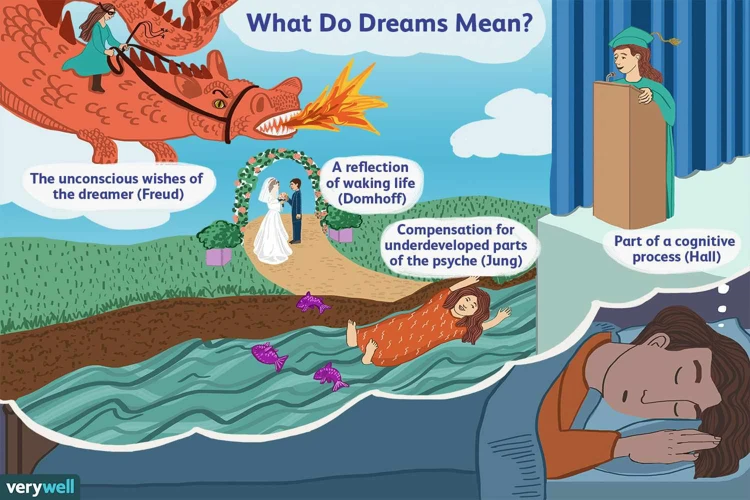
Scientific studies and research findings have played a crucial role in unraveling the complex relationship between lucid dreaming and sleep paralysis. In recent years, researchers have conducted various studies to better understand the underlying mechanisms and experiences associated with these phenomena. One area of study focuses on the shared neurological processes that occur during both lucid dreaming and sleep paralysis. Neuroimaging studies have revealed intriguing similarities in brain activity, suggesting that certain regions involved in self-awareness and emotion regulation may be implicated in both states. Additionally, these studies have shed light on how the brain transitions between different states of consciousness during sleep. Another line of research explores the use of sleep paralysis as a tool to induce lucid dreaming. By understanding the physiological and psychological factors at play, scientists aim to develop techniques that help individuals control and navigate their dream experiences more effectively. Psychological studies have shown that lucid dreaming can have practical benefits, such as enhanced problem-solving skills, self-reflection, and creativity. By examining the findings from these scientific investigations, we can gain a deeper understanding of the intricacies of lucid dreaming and sleep paralysis, ultimately unlocking the potential for personal growth and self-discovery.
Unraveling the Complex Relationship
Unraveling the Complex Relationship between lucid dreaming and sleep paralysis is a fascinating endeavor that delves into the interconnected workings of the mind. Scientists and researchers have long been intrigued by the shared elements and overlapping features of these two phenomena. By studying brain activity during these states, they have discovered that both lucid dreaming and sleep paralysis involve alterations in the traditional sleep-wake cycle. Lucid dreaming, the ability to become aware and conscious within a dream, has been found to occur during the rapid eye movement (REM) stage of sleep, where most dreaming takes place. Sleep paralysis, on the other hand, often occurs as an individual transitions between sleep stages, resulting in temporary muscle immobilization. The complex relationship between the two can manifest in different ways. For some, lucid dreaming can be a gateway to experiencing sleep paralysis, where the boundaries of dreaming and wakefulness blur. Conversely, sleep paralysis can serve as a catalyst for inducing lucid dreams, as the mind remains conscious while the physical body remains asleep. Understanding this intricate connection can enhance our perception of the dream world and open up new possibilities for self-reflection, problem-solving, and creative exploration. By further exploring the works of famous lucid dreamers throughout history, such as Salvador Dali and Nikola Tesla, we can gain deeper insight into the potential power and significance of these extraordinary experiences.
Exploring the Spiritual and Metaphysical Aspects
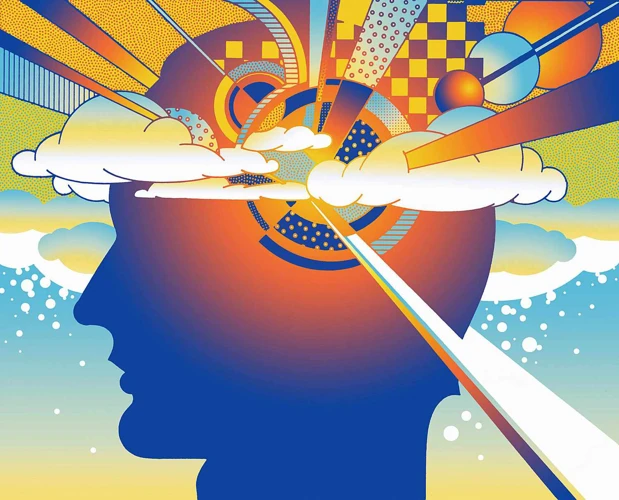
Exploring the spiritual and metaphysical aspects of lucid dreaming and sleep paralysis opens up a realm of profound contemplation and introspection. For centuries, various cultures and belief systems have attributed spiritual significance to dreams, viewing them as gateways to higher realms of consciousness or as channels for divine communication. Some ancient civilizations even utilized dreaming as a means of accessing hidden knowledge or receiving prophetic visions. In modern times, individuals who engage in lucid dreaming often report heightened spiritual experiences, feeling a deep connection to something greater than themselves. Lucid dreams can offer opportunities for self-reflection, personal growth, and exploring the depths of the subconscious. It is within these lucid dream states that individuals may encounter symbols, archetypes, or even deceased loved ones, leading to a sense of interconnectedness and spiritual awakening. While the scientific understanding of these experiences may focus more on neurology and psychology, the spiritual and metaphysical aspects of lucid dreaming remind us of the profound mysteries that lie within our minds and souls, urging us to delve deeper and embrace the realms of possibility that exist both in our waking lives and in the ethereal landscapes of our dreams. [Anchor: famous lucid dreamers in history]
Ancient Beliefs and Modern Interpretations
Ancient beliefs and modern interpretations surrounding dreams and their significance offer a fascinating glimpse into the cultural and spiritual fabric of different societies. Throughout history, various civilizations have attributed profound meaning to dreams, recognizing them as a bridge between the mortal realm and the divine. In ancient Egypt, dreams were considered messages from the gods, providing guidance and insight into the future. Greek philosopher Plato theorized that dreams were a reflection of the soul’s true nature, free from the constraints of the physical world. Indigenous cultures, such as the Native Americans, held dreams in high regard, viewing them as portals to ancestral wisdom and divine communication. In more recent times, renowned psychologist Carl Jung explored the concept of the collective unconscious, suggesting that dreams tapped into a shared reservoir of symbolic imagery and archetypes. Contemporary psychologists and researchers continue to study dreams, seeking to unravel their complex symbolism and potential therapeutic applications. Today, many individuals use lucid dreaming as a tool for problem-solving, self-reflection, and personal growth. Some of history’s most famous lucid dreamers, like Salvador Dali and Nikola Tesla, attribute their creative and innovative ideas to their experiences in the dream realm. The intersection of ancient beliefs and modern interpretations serves as a reminder of the enduring fascination humans have with the enigmatic nature of dreams and their profound impact on our lives.
Practical Tips for Lucid Dreaming and Sleep Paralysis Management
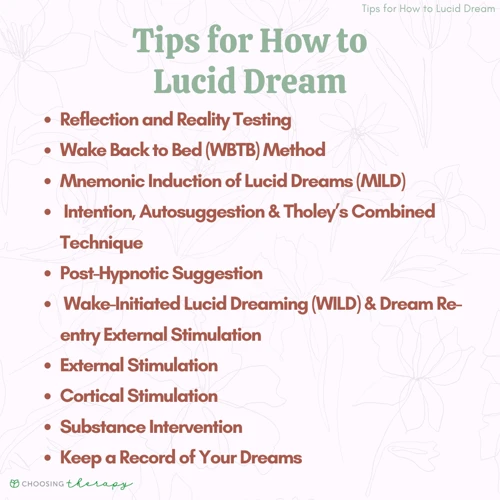
When it comes to managing and harnessing the power of lucid dreaming and sleep paralysis, there are practical tips that can help individuals navigate these extraordinary experiences. Establishing healthy sleep habits is crucial, as both lucid dreaming and sleep paralysis tend to occur during periods of REM sleep. Maintaining a consistent sleep schedule, creating a relaxing bedtime routine, and ensuring a comfortable sleep environment can enhance the quality of both dreaming and sleep in general. Lucid dreaming techniques, such as reality checks, keeping a dream journal, and practicing visualization, can increase awareness within dreams and improve the chances of having lucid experiences. Creating a safe haven for sleep, free from distractions and stressors, can also contribute to a more conducive environment for exploring the dream world. Additionally, it is important to approach these experiences with an open mind and a sense of curiosity, as overcoming fear and embracing the power of lucid dreaming and sleep paralysis can lead to profound self-discovery and problem-solving assistance. By integrating these practical tips into one’s lifestyle, individuals can unlock the incredible potential that lies within the realm of lucid dreaming and sleep paralysis, opening doors to enhanced creativity, self-reflection, and personal growth.
Establishing Healthy Sleep Habits
Establishing Healthy Sleep Habits is essential for enhancing both the quality and quantity of sleep, ultimately promoting the potential for lucid dreaming and managing sleep paralysis. Here are some key tips to cultivate a sleep-friendly environment and routine:
1. Stick to a Consistent Sleep Schedule: Set a regular bedtime and wake-up time, even on weekends, to train your body’s internal clock.
2. Create a Relaxing Bedtime Routine: Engage in calming activities before bed, such as reading a book, taking a warm bath, or practicing relaxation techniques like meditation or deep breathing.
3. Optimize Your Sleep Environment: Make sure your bedroom is quiet, dark, and at a comfortable temperature. Consider using earplugs, eye masks, or white noise machines if necessary.
4. Limit Exposure to Electronic Devices: The blue light emitted from electronic devices can hinder the production of melatonin, a hormone that regulates sleep. Avoid using screens at least an hour before bed or use blue light filters.
5. Avoid Stimulants and Heavy Meals: Minimize consumption of caffeine, nicotine, and alcohol, as they can disrupt sleep patterns. Additionally, avoid large meals close to bedtime, as digestion can interfere with sleep quality.
6. Regular Exercise: Engaging in physical activity during the day can promote better sleep, but avoid exercising too close to bedtime as it may stimulate your body and make it harder to fall asleep.
7. Create a Comfortable Sleep Environment: Invest in a supportive mattress, comfortable pillows, and breathable bedding to ensure optimal comfort while sleeping.
8. Seek Professional Help if Needed: If you have persistent sleep issues, consult with a healthcare professional or sleep specialist to address any underlying medical conditions or sleep disorders.
By implementing these healthy sleep habits, you can create a conducive environment for lucid dreaming and reduce the occurrence of sleep paralysis. Remember, healthy sleep habits are the foundation for a restful night’s sleep and the exploration of the remarkable world of dreams.
Lucid Dreaming Techniques
Lucid dreaming techniques serve as powerful tools to enhance one’s ability to become aware and in control within the dream world. These techniques can increase the likelihood of experiencing lucid dreams and allow individuals to actively participate in shaping their dream narratives. One widely used technique is reality testing, which involves regularly questioning one’s surroundings throughout the day to determine whether one is dreaming or awake. By making this a habit, it becomes more likely to extend the practice into dream scenarios, enabling the dreamer to recognize the dream state. Another technique is mnemonic induction of lucid dreams (MILD), which involves setting intentions before sleep and repeating affirmations to oneself, such as “I will have a lucid dream tonight.” This method aims to program the subconscious mind to prioritize lucidity during dream states. Another approach is wake back to bed (WBTB), where individuals wake up after a few hours of sleep, stay awake for a short period, and then go back to sleep with the intention of entering a lucid dream state. This technique capitalizes on the increased likelihood of entering REM sleep, the stage associated with vivid dreams. Additionally, visualization techniques and keeping dream journals can enhance dream recall and help identify common dream themes or patterns, increasing the chances of recognizing when one is in a dream state. By combining and experimenting with these techniques, individuals can improve their capacity for lucid dreaming, unlocking the potential for personal growth, problem-solving, and even self-reflection within the vast landscapes of the dream world.
Creating a Safe Haven for Sleep
Creating a safe haven for sleep is essential for facilitating both restful sleep and the exploration of lucid dreaming experiences. A consistent and calming sleep environment can help signal to the brain and body that it is time to unwind and prepare for restorative rest. To create a safe haven for sleep, it is crucial to eliminate distractions and promote relaxation. This can be achieved by keeping the bedroom clean, organized, and free from clutter. Using soft lighting or blackout curtains can create a soothing ambiance, while ensuring a comfortable mattress and pillows can enhance physical comfort. Establishing a relaxing bedtime routine can also aid in preparing the mind and body for sleep. Activities such as reading a book, practicing relaxation techniques like deep breathing or meditation, or listening to calming music can help promote a sense of tranquility. It is also important to set aside worries and anxieties before bedtime and create a mental space that is conducive to sleep. This can be achieved through journaling, practicing gratitude, or engaging in self-reflection. By cultivating a safe haven for sleep, individuals can optimize their chances of experiencing not only restful sleep but also the wonders of lucid dreaming, as the calm and nurtured mind is more receptive to these extraordinary experiences.
The Potential Benefits and Dangers of Lucid Dreaming and Sleep Paralysis
Lucid dreaming and sleep paralysis hold both potential benefits and dangers for those who experience them. On the positive side, lucid dreaming offers a unique opportunity for enhanced creativity, problem-solving, and self-discovery. When individuals are aware they are dreaming, they can actively engage with the dream world, shaping and exploring it with intention and purpose. This heightened level of consciousness can lead to breakthrough insights, innovative ideas, and personal growth. Lucid dreaming can also provide a platform for self-reflection, allowing individuals to confront and process their emotions, fears, and desires in a safe and controlled environment. Some famous individuals throughout history have harnessed the power of lucid dreaming to aid in their creative endeavors, such as artists, writers, and inventors. However, it is crucial to recognize the potential dangers and risks associated with lucid dreaming and sleep paralysis. For individuals with sleep disorders, these states of consciousness can exacerbate existing problems or disrupt sleep patterns. Additionally, the boundaries between dreams and reality can blur, leading to confusion and potential psychological implications. It is important to approach lucid dreaming and sleep paralysis with caution, understanding and managing the potential risks while also embracing the countless opportunities for personal growth and exploration. (Source: Lucid Dreaming: Problem Solving and Self-Reflection)
Enhanced Creativity, Problem-Solving, and Self-Discovery
Enhanced Creativity, Problem-Solving, and Self-Discovery are among the potential benefits that can be unlocked through the practice of lucid dreaming and the exploration of the dream world. When we become aware that we are dreaming within a dream, we gain the ability to consciously manipulate and shape our dream experiences. This newfound control can be harnessed to enhance our creativity, as we can create and explore worlds that surpass the boundaries of reality. In lucid dreams, individuals often report accessing a wellspring of inspiration, discovering new artistic ideas, and unlocking innovative solutions to problems. The dream world provides a playground for experimentation and exploration, where conventional limitations cease to exist. Lucid dreaming offers a unique opportunity for self-discovery. Through self-reflection and introspection within the dream state, we can gain insight into our subconscious desires, fears, and motivations. Lucid dreams can serve as a platform for confronting and working through unresolved emotions and conflicts. They provide a safe space to explore different aspects of our identity and tap into hidden potentials. By connecting with our inner selves on a profound level, we can gain a deeper understanding of who we are and foster personal growth. As we delve into the world of lucid dreaming, we will discover the stories of famous lucid dreamers throughout history who have harnessed their dreams to unlock their true potential and make significant contributions to various fields of knowledge and creativity.
Navigating the Risks: Sleep Disorders and Psychological Implications
Navigating the Risks: Sleep Disorders and Psychological Implications
Sleep disorders can have a significant impact on an individual’s overall well-being and mental health. When it comes to lucid dreaming and sleep paralysis, there are potential risks that need to be considered. While these experiences can be awe-inspiring and empowering, they may also contribute to the development or exacerbation of certain sleep disorders. Sleep disorders such as insomnia, sleep apnea, and narcolepsy can disrupt the quality and quantity of sleep, affecting both dream states and wakefulness. Insomnia, characterized by difficulty falling asleep or staying asleep, can hinder the ability to reach the REM stage of sleep, where lucid dreaming is more likely to occur. Sleep apnea, a condition in which breathing repeatedly stops and starts during sleep, can lead to fragmented sleep and increased instances of sleep paralysis. Narcolepsy, a neurological disorder that affects the brain’s ability to regulate sleep-wake cycles, can result in excessive daytime sleepiness and instances of sleep paralysis. Additionally, psychological implications may arise from the experience of lucid dreaming and sleep paralysis. In rare cases, individuals may develop anxiety, fear, or post-traumatic stress disorder (PTSD) related to their sleep experiences. It is crucial to approach these phenomena with caution and seek professional guidance if they begin to interfere with daily functioning and overall well-being. By understanding and acknowledging the potential risks, individuals can navigate the complexities of lucid dreaming and sleep paralysis responsibly and prioritize their mental health and sleep hygiene. Link: Famous Lucid Dreamers in History
Conclusion
Unlocking the enigmatic link between dreaming and awakening has provided us with a deeper understanding of the complexities of the human mind. In conclusion, this article has explored the captivating world of lucid dreaming and sleep paralysis, shedding light on their connection and the shared neurological processes that underlie them. We have examined the role of sleep paralysis in inducing lucid dreaming and discussed practical tips for managing and harnessing these experiences. Additionally, we have delved into scientific studies and research findings that have unraveled the intricate relationship between these phenomena. Furthermore, we have touched upon the spiritual and metaphysical aspects of lucid dreaming and sleep paralysis, exploring ancient beliefs and modern interpretations. While lucid dreaming and sleep paralysis offer incredible potential for enhanced creativity, problem-solving, and self-discovery, we have also acknowledged the potential risks and psychological implications associated with these states. As we continue to explore the realm of dreams, the enigmatic connection between the conscious and subconscious mind will remain a subject of fascination and exploration for years to come, inspiring researchers and individuals alike to dive deeper into the mysteries of the dream world.
Unlocking the Enigmatic Link Between Dreaming and Awakening
Unlocking the Enigmatic Link Between Dreaming and Awakening reveals the profound connection between these two states of consciousness. While dreaming and awakening may appear to be separate and distinct experiences, they are intricately intertwined, offering a deeper understanding of the human mind. Dreams, with their surreal imagery and fantastical narratives, provide a gateway to explore the subconscious, uncover hidden desires, and process emotions. They can offer valuable insights, creative inspiration, and self-reflection. On the other hand, awakening represents a return to the physical world, where rationality and logic prevail. It is a state where we navigate our daily lives, making decisions, and interacting with the environment around us. However, recent scientific findings suggest that the line between dreaming and awakening may not be as clear-cut as previously thought. Researchers have discovered that certain individuals can achieve lucidity in their dreams, enabling them to become active participants in the dream world, often with control over their actions and surroundings. This phenomenon, known as lucid dreaming, blurs the boundary between dreams and reality, allowing individuals to consciously shape and manipulate their dream experiences. Lucid dreaming offers a unique opportunity to explore the connection between dreaming and awakening, as individuals are able to maintain self-awareness while dreaming, akin to being “awake” within the dream itself. Understanding this link has become a subject of fascination for psychologists, neuroscientists, and spiritual seekers alike, as it opens up the possibility of harnessing the power of dreams for personal growth, problem-solving, and self-discovery. By unlocking the enigmatic link between dreaming and awakening, we can gain profound insights into the complexities of the human mind and unlock the potential hidden within our dreams.
Frequently Asked Questions
What is lucid dreaming?
Lucid dreaming is a unique state of consciousness where an individual becomes aware that they are dreaming while they are still in the dream. This awareness allows the dreamer to have some degree of control and influence over the dream narrative and experience.
How can one achieve lucid dreaming?
There are various techniques that can help induce lucid dreaming, such as reality checks, keeping a dream journal, practicing mindfulness and meditation, and using techniques like Wake Induced Lucid Dreaming (WILD) or Mnemonic Induced Lucid Dreaming (MILD).
What is sleep paralysis?
Sleep paralysis is a temporary inability to move or speak that occurs when transitioning between sleep and wakefulness. During sleep paralysis, the mind is awake, but the body remains in a state of muscle paralysis, often accompanied by hallucinations and a sense of pressure on the chest.
Is sleep paralysis dangerous?
Sleep paralysis itself is not dangerous and is generally considered to be harmless. However, the associated hallucinations and sense of fear or dread can be distressing for some individuals.
What is the relationship between lucid dreaming and sleep paralysis?
There is a fascinating connection between lucid dreaming and sleep paralysis. Both experiences occur during REM sleep and involve a heightened state of consciousness. In some cases, sleep paralysis can be a gateway to lucid dreaming.
Can sleep paralysis be used to induce lucid dreaming?
Yes, some individuals have reported using sleep paralysis as a launching pad for lucid dreaming. By remaining calm during sleep paralysis and focusing on entering a dream state, some people have transitioned from sleep paralysis into a lucid dream.
Are there any risks associated with lucid dreaming and sleep paralysis?
While lucid dreaming and sleep paralysis are generally considered safe experiences, some individuals may experience sleep disturbances, anxiety, or difficulty distinguishing between dream and reality. It’s important to approach these experiences with caution and seek professional help if needed.
Can lucid dreaming help overcome nightmares?
Yes, lucid dreaming techniques can be helpful in overcoming nightmares. By becoming aware that you are in a dream and having some control over the dream narrative, you can transform a nightmare into a more positive or empowering experience.
Are there famous lucid dreamers in history?
Absolutely! Throughout history, there have been individuals who have had significant experiences with lucid dreaming. Some notable figures include philosopher Aristotle, inventor Thomas Edison, and psychiatrist Carl Jung. These individuals explored and documented their experiences of lucid dreaming and its potential benefits.
Can lucid dreaming be used for problem-solving and self-reflection?
Yes, lucid dreaming can be a valuable tool for problem-solving and self-reflection. By consciously exploring dream scenarios, individuals can gain insights into their subconscious thoughts, fears, and desires. Lucid dreaming can also provide a platform for creative thinking and finding innovative solutions to real-life challenges.

